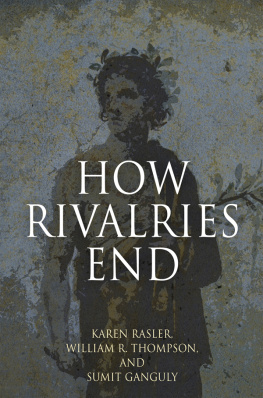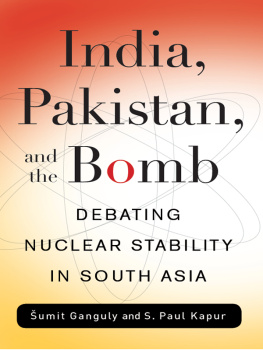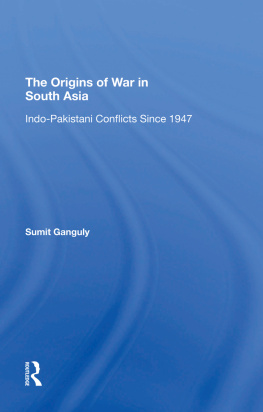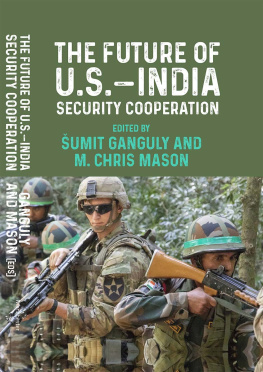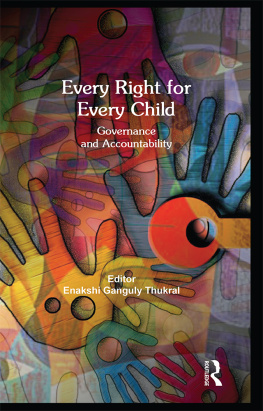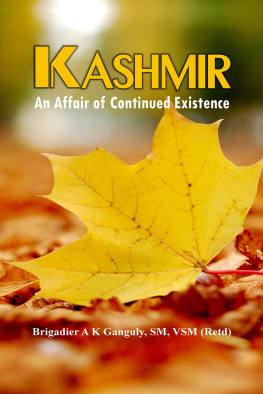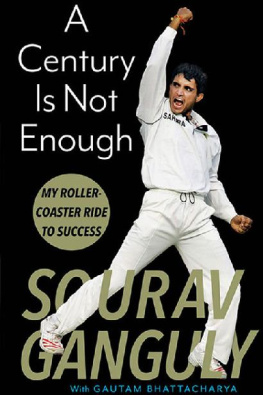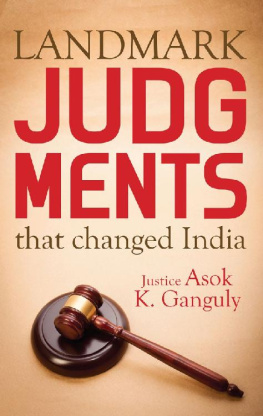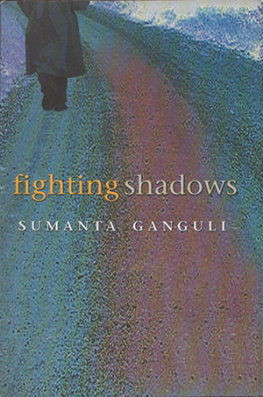Ganguly Sumit - How Rivalries End
Here you can read online Ganguly Sumit - How Rivalries End full text of the book (entire story) in english for free. Download pdf and epub, get meaning, cover and reviews about this ebook. City: Philadelphia, year: 2013, publisher: University of Pennsylvania Press, Inc., genre: Politics. Description of the work, (preface) as well as reviews are available. Best literature library LitArk.com created for fans of good reading and offers a wide selection of genres:
Romance novel
Science fiction
Adventure
Detective
Science
History
Home and family
Prose
Art
Politics
Computer
Non-fiction
Religion
Business
Children
Humor
Choose a favorite category and find really read worthwhile books. Enjoy immersion in the world of imagination, feel the emotions of the characters or learn something new for yourself, make an fascinating discovery.
- Book:How Rivalries End
- Author:
- Publisher:University of Pennsylvania Press, Inc.
- Genre:
- Year:2013
- City:Philadelphia
- Rating:5 / 5
- Favourites:Add to favourites
- Your mark:
- 100
- 1
- 2
- 3
- 4
- 5
How Rivalries End: summary, description and annotation
We offer to read an annotation, description, summary or preface (depends on what the author of the book "How Rivalries End" wrote himself). If you haven't found the necessary information about the book — write in the comments, we will try to find it.
How Rivalries End — read online for free the complete book (whole text) full work
Below is the text of the book, divided by pages. System saving the place of the last page read, allows you to conveniently read the book "How Rivalries End" online for free, without having to search again every time where you left off. Put a bookmark, and you can go to the page where you finished reading at any time.
Font size:
Interval:
Bookmark:

In this appendix, we first focus briefly on listing a number of factors that have been mentioned as important to conflict de-escalation processes. Afterward, we quickly move on to the consideration of fourteen models that are relevant to rivalry de-escalation and termination. These models include Rosati 1994 and Welch 2005 on foreign policy restructuring; Checkel 1998 and Legro 2005 on ideational shifts in foreign policy; Diehl and Goertz 2000, Maoz and Mor 2002, and Cox 2010 on rivalry onset and termination; Rock 1989, T. Armstrong 1993, and Kupchan 2010 on rapprochement; Lebow 1995, Pervin 1997, and Orme 2004 on adversarial de-escalation and accommodation; and Womack 2006 on asymmetrical politics. We find that all of these models appear to be looking at similar explanations, but they privilege different combinations of factors more than others. At the same time, these models stress similar sets of variables that produce a surprising amount of overlap in the existing literature.
Students of conflict resolution maintain that the de-escalation of protracted conflicts ultimately depends on conducive background conditions that encourage adversaries to believe in settlement. Shifts in these background conditions create moments of opportunities or ripeness when peacemaking efforts are likely to have favorable outcomes. provides a list of some of the many factors that scholars have linked to the de-escalation process. It shows that de-escalation may arise from domestic conditions, international contexts, and the relations between the adversaries (Kriesberg 1991).
Past research also indicates, however, that there is no simple direct relationship between any of these factors and the termination of protracted conflict across many domains (Licklider 1993: 303). All of these variables have different sorts of impacts under different circumstances. Hence, we have no single pattern or theory of conflict resolution. In addition, Licklider (1993: 303304) argues that conflict resolution more likely reflects a set of processes in which certain critical choice points emerge. Decisions at these points lead to alternative strategies of conflict termination. But, which situations (factors or combination of factors) present critical choice points and why is left unclear.
Table A.1. Conditions That Bring about De-escalation in Protracted Conflicts
| Processes | References |
Hurting stalemates | Zartman and Aurik 1991; Zartman 1993, 2001; Grieg and Diehl 2005, 2006; Weible and Sabatier 2006 |
Promise of reciprocity | Ward 1982; Touval and Zartman 1985; Goldstein and Freeman 1990; Zartman 1993; Lebow 1995; Rajmaira 1997; Goldstein et al. 1998, 2001; Bogumil 2002; Gintis et al. 2005 |
Extending peace initiatives | Kriesberg 1992; Hutchison 2001; Zartman 2001; Garb and Allen Nan 2006 |
Leadership changes and shifts in the internal distribution of power | Evangelista 1991; Licklider 1993; Bennett 1997; Mendelson 1998; Diehl and Goertz 2000; Colaresi 2004 |
Leadership autonomy | Stein 1993a; Coleman 1997 |
Third-party mediation | Touval 1975; Pruitt 1981; Becovitch, 1995; Hartzell 1999; Regan and Stam 2000; Schrodt and Gerner 2004 |
Mutual trust and credible commitments | Kelman 1995; Walter 1999; Bar-Tal 2000; Kydd 2005 |
Organizational failure and learning | Hermann 1990; Levy 1994; Stein 1995 |
Shifts in the external distribution of power (e.g., military defeats, loss of patronage) | Bueno de Mesquita, Siverson, and Woller 1992; Mitchell 1995; Huth 1996; Kriesberg 1998; Chiozza and Goemans 2004 |
Internal economic crises | Stein 1993b; Waterman 1993; Bennett and Nordstrom 2000 |
| New perceived threats to security | Rock 1989; Lebow 1995; Thompson 2001b; Kupchan 2010 |
In an effort to pare down every argument that is potentially relevant to our understanding of rivalry termination, we focus on fourteen previous models of conflict de-escalation that overlap with features in our expectancy revision model. We begin with Rosati's (1994) more general model for foreign policy restructuring.
Rosati assumes that societies at any given point in time contain competing domestic forces that work toward and against reinforcing the status quo (Boulding 1970). Which groups gain the upper hand and in what circumstances accounts for any changes that may occur. Rosati's model concentrates on the interactions among state institutions, society, and their environment, which have an impact on the development of strategies and policies. State bureaucracies are viewed as inert institutions that move only when pushed hard to do so (Allison 1971; Halperin 1974). Meanwhile, decision makers, who preside over state policy formulation, are disinclined to alter the belief systems that underpin their choice of strategies (Holsti 1967; Jervis 1976). Mass publics also tend to be conservative because they are more comfortable with the status quo than with the uncertainties of change. Thus, vested interests and tradition pose obstacles to potential changes and leaders who advocate for such change. Concomitantly, the international environment also presents a number of built-in constraints on domestic policy shifts, including alliances, commercial relationships, legal commitments, and norms. Continuity rather than discontinuity more often characterizes the development of foreign policies and strategies (Rosenau 1981; Holsti 1982; Goldmann 1988; Hermann 1990; Volgy and Schwarz 1994).
Nonetheless, societal and environmental alterations occur and the question then becomes whether states and leaders modify their foreign policies to adapt to these new circumstances. If they choose to avoid altering existing policies, then leaders and their governments risk the increasing probability that their policies will fail, which in turn will expand the criticism from groups that advocate for foreign policy change. Domestic or international crises also open up the opportunity for such change as defenders of the status quo are overwhelmed by pressures both at home and abroad for a reorientation. In sum, foreign policy failures expose the liabilities and inappropriateness of existing strategies, shake conventional belief systems, upend government personnel supporting the status quo, and bring forth new personnel committed to different foreign policy approaches.
Rosati quotes Nisbet (1969: 282) to summarize the nature of this crisis-induced dynamic: A given way of behaving tends to persist as long as circumstances permit. Thenthe way of behaving ceases to be possible as the result of some intrusion, some difficulty which is the consequence of event or impact, and a period of crisis ensues.
Hence, crises create the necessary space for policy innovators and their innovations. However, there is no guarantee that such crises will lead to change. If catalysts produce positive outcomes, then leaders and governments are likely to reinforce policy continuities. If, however, crises are perceived to have negative consequences, then they are more likely to generate the quest for new policiesand the more severe the impact of negative events, the greater is the potential for foreign policy reorientation.
Based on this perspective, foreign policy restructuring tends to be fairly abrupt and episodic (Krasner 1984). Without crises, incremental change is the likely consequence. Only when the intersection of ongoing societal and environmental shifts and traditional policies combine with critical events that lead to the defeat of status quo defenders do we expect to observe a significant redirection of foreign policy. If, however, status quo defenders maintain their political control, then they are likely to support only minor or moderate alterations in foreign policy.
Font size:
Interval:
Bookmark:
Similar books «How Rivalries End»
Look at similar books to How Rivalries End. We have selected literature similar in name and meaning in the hope of providing readers with more options to find new, interesting, not yet read works.
Discussion, reviews of the book How Rivalries End and just readers' own opinions. Leave your comments, write what you think about the work, its meaning or the main characters. Specify what exactly you liked and what you didn't like, and why you think so.

